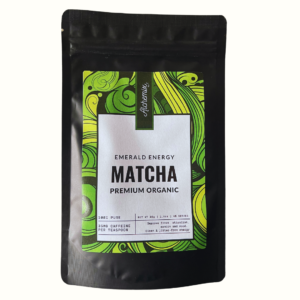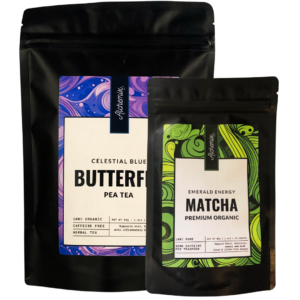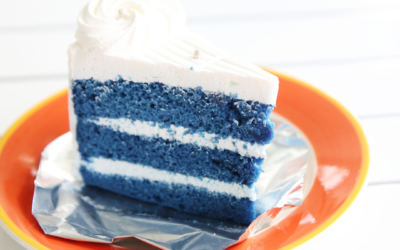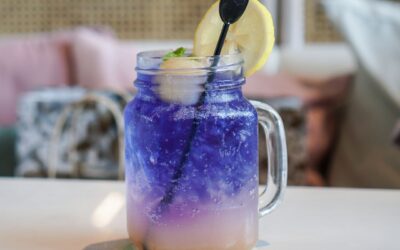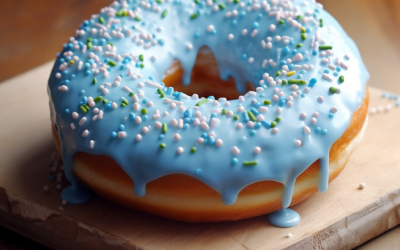Discover the enchanting beauty and subtle flavor of Butterfly Pea Marbled Sourdough! This unique bread creation showcases the natural blue pigment of butterfly pea flowers, swirled throughout a classic sourdough base for a visually stunning effect. It’s a feast for the eyes and a satisfying departure from the ordinary.
What is Butterfly Pea Flower?
Butterfly pea flowers (Clitoria ternatea) are a vibrant blue flowering plant native to Southeast Asia. Traditionally used in teas and cuisine, they impart a subtle earthy flavor and their most striking feature – a beautiful blue color that changes with pH levels.
The Art of Marbling Sourdough
Incorporating butterfly pea flowers into sourdough is a culinary art form. A butterfly pea infusion is created, then carefully kneaded into a portion of the sourdough. This colored dough is then combined with the plain sourdough, creating mesmerizing swirls of blue with each slice.
While the dough boasts a vibrant blue hue, the baking process leads to a fascinating transformation. As the bread bakes, the heat alters the pH, causing the blue to shift into subtle shades of purple, teal, and sometimes even hints of green.
Butterfly pea flowers offer a delicate, slightly earthy flavor that complements the tanginess of sourdough beautifully. They are also known in traditional medicine for potential antioxidant and anti-inflammatory properties.
Proofing Basket vs. Bread Tin: The Impact on Your Sourdough
The final rise of your sourdough loaf, known as proofing, significantly influences the bread’s shape, texture, and overall appearance. Choosing between a proofing basket or a bread tin offers different results:
Proofing Basket:
- Shape: Proofing baskets, often made of cane or wicker, create beautifully rounded loaves with a rustic appearance. The basket’s material helps draw out some moisture, giving the crust a crispier texture.
- Scoring: Sourdough loaves proofed in baskets often have intricate, decorative scoring patterns on top, made possible by the support the basket provides.
- Requires Skill: Using a proofing basket takes some practice to avoid the dough sticking or deflating when transferred to the oven.
Bread Tin:
- Shape: Bread tins yield the classic square-shaped sandwich loaf, offering uniform slices.
- Crust Formation: Bread tins can lead to a slightly softer crust compared to baskets, as they retain more moisture during baking.
- Convenience: Bread tins are easier for beginners as they provide structure and minimize the risk of the dough collapsing during baking.
Choosing the Right Method
The decision between a proofing basket and a bread tin depends on your desired aesthetic and skill level. If you’re aiming for an artisan-style loaf with intricate scoring and a crispy crust, a proofing basket is your best bet. For a classic, convenient sandwich loaf, a bread tin is a reliable option.
Butterfly Pea Marbled Sourdough
Yields: 1 loaf
Ingredients
- For the Sourdough Starter:
- 100g active sourdough starter
- 100g strong white bread flour
- 100g lukewarm water
- For the Butterfly Pea Infusion
- 1 tablespoon dried butterfly pea flowers
- 100ml hot water (not boiling)
- For the Dough:
- 400g strong white bread flour
- 100g wholemeal flour (whole wheat flour)
- 350g lukewarm water
- 10g fine salt
Equipment
- Large mixing bowls
- Dough scraper
- Proving basket (or a bowl lined with a floured kitchen towel)
Instructions
Day 1
- Feed the Starter: Combine your sourdough starter with equal parts strong white bread flour and lukewarm water. Let it rest at room temperature for 6-8 hours, or until it doubles in size and becomes bubbly.
- Make the Infusion: Steep butterfly pea flowers in hot water for 10-15 minutes. Strain the infusion, reserving the intensely blue liquid.
Day 2
- Autolyse: In a large bowl, combine flours and 300g lukewarm water. Mix until shaggy dough forms, then let it rest (autolyse) for 30 minutes.
- Incorporate Starter and Salt: Add 150g of your active sourdough starter and salt to the dough. Knead using your preferred method until the dough is smooth and elastic (around 10 minutes).
- Bulk Fermentation: Place the dough in a lightly oiled bowl, cover, and let it rise for 4-6 hours at room temperature. Perform “stretch and folds” every 30 minutes for the first 2 hours to develop gluten structure.
- Divide and Shape: Gently divide the dough in half. Shape one half into a round loaf and place into your proving basket.
- Marble the Dough: Knead enough butterfly pea infusion into the other half to achieve your desired blue intensity. Shape this dough into a loaf.
- Cold Proof: Loosely combine both loaves inside a large bowl or container, making sure they slightly touch. Cover and refrigerate overnight (12-16 hours).
Day 3
- Preheat: Preheat oven to 230°C (450°F) with a Dutch oven or heavy-bottomed pot inside.
- Score and Bake: Gently remove the loaves from the refrigerator. Score the tops with a sharp blade. Carefully place loaves into the preheated Dutch oven, cover, and bake for 20 minutes. Reduce heat to 200°C (400°F), uncover, and bake for another 20-30 minutes, or until golden brown.
- Cool: Let the bread cool completely on a wire rack before slicing. Enjoy the beautiful marbled effect and delicious sourdough flavor!
Remember: Sourdough baking success relies on an active starter and environmental factors. Your timings may vary.
Tips for Baking Butterfly Pea Marbled Sourdough
Quality Flowers: The Key to Vibrant Colour
Opt for high-quality, dried, organic butterfly pea flowers. These will provide the most intense blue hue and the best subtle, earthy flavour. Avoid flowers that appear dull or have additives.
Infusion Technique: Mastering the Blue
Steeping butterfly pea flowers requires the right temperature. Use hot water (around 80°C/175°F), but not boiling, as overly hot water can dull the colour. Steep for 10-15 minutes, then strain carefully to remove all flower bits.
Experiment with Colour: Your Artistic Touch
The amount of butterfly pea infusion you add to the dough directly impacts the colour intensity. Start with small amounts and gradually increase until you achieve your desired shade of blue.
Embrace the Change: The Magic of Baking
One of the most exciting aspects of butterfly pea sourdough is the colour transformation! The baking process alters the pH of the dough, causing the blue to shift into beautiful variations of purple, teal, and even hints of green. Each loaf is a unique creation!



